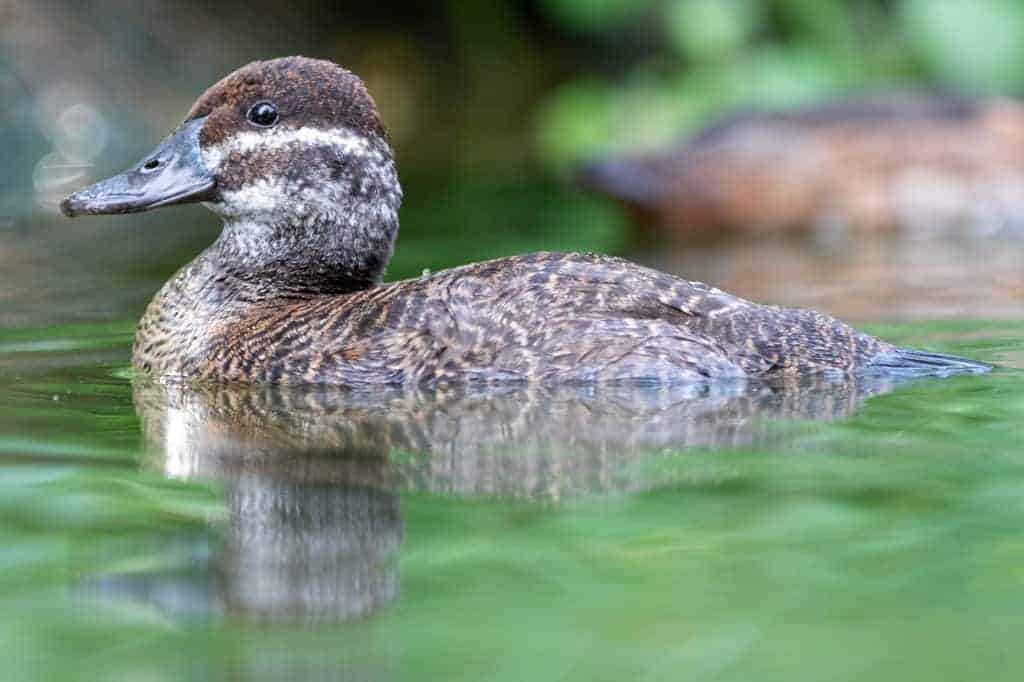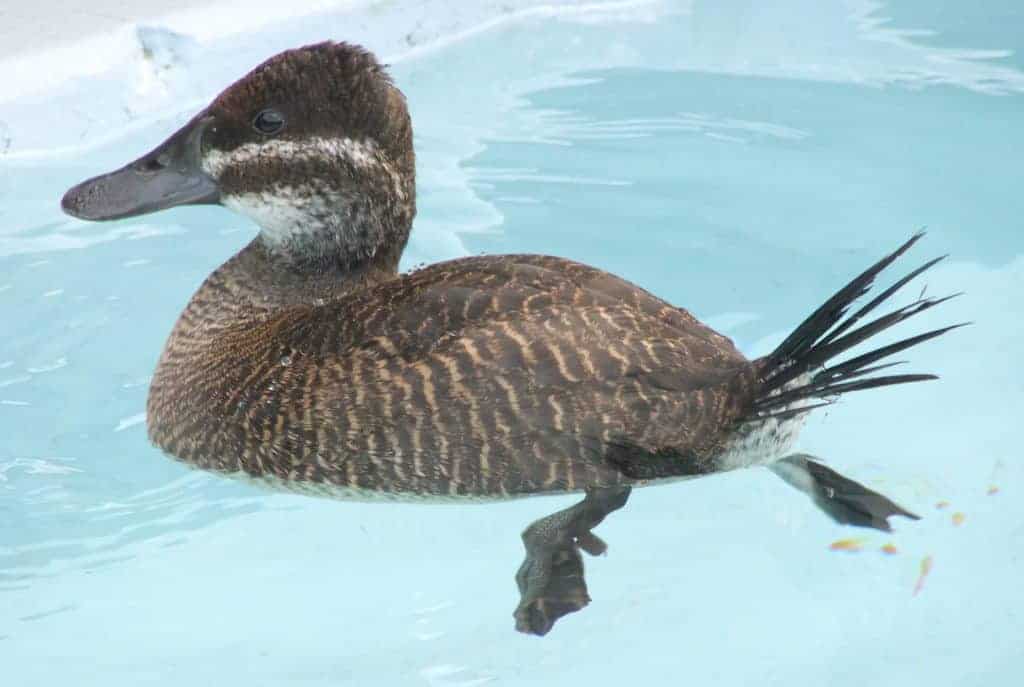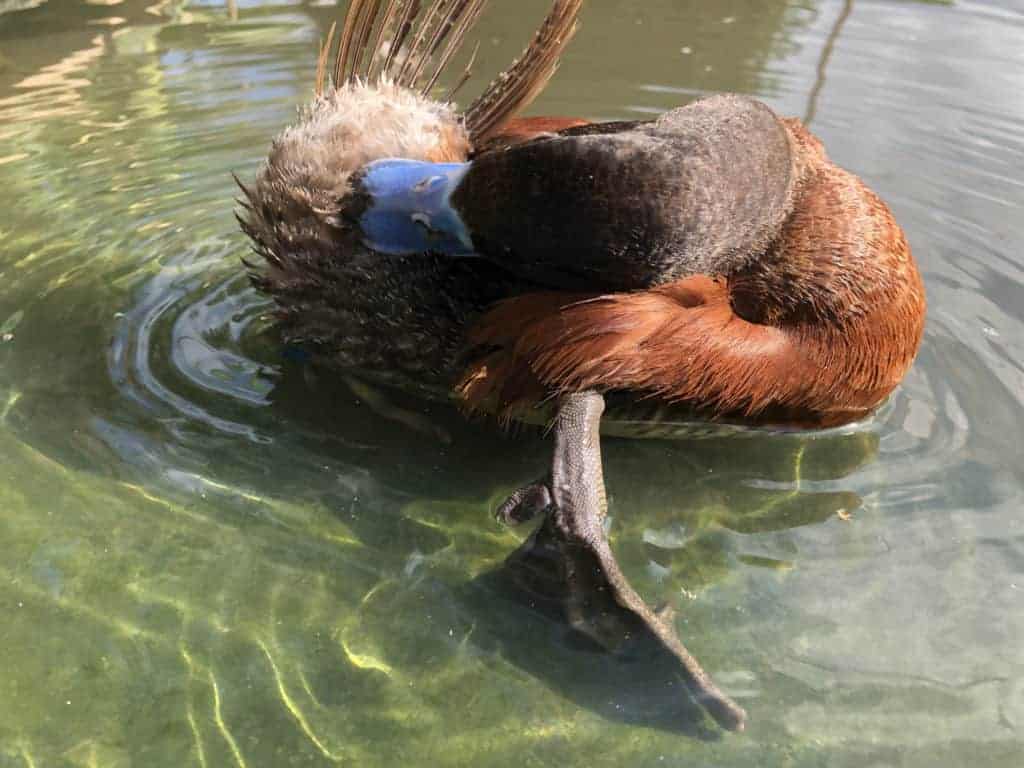Argentine Blue-billed or Lake Duck


Lake Ducks look their best in our summer. When the Northern Hemisphere ducks are getting their breeding finery, Lake ducks get female-like cryptic plumage and drakes lose the intense blue on their bills.
Oxyura vittata
Also known as the Argentine Ruddy Duck, Lake Ducks are found over most lowland areas of Argentina and Chile.

Lake Ducks are a charming addition to a mixed collection if there is space for others to get out of the way. Males fight regularly, but usually only for a few moments. Females can be very aggressive in nest defence, or fling themselves away at high speed. Either option can cause egg damage, so if you are checking the nest be prepared to potentially lose an egg in a worst case scenario. Eggs are very thick, and so taking a marker egg into an incubator can help you identify the incubation stage and inform you when to collect the rest.
Hatching can be very rapid with eggshells getting crushed into the bottom of the nest, and so late hatching ducklings can get squashed and lost. In the incubator they can often surprise you. They need a good humidity of 50-60%, and once dry encourage them to drink as they can get dehydrated being so big and uncoordinated.
The ducklings are best parent-reared with shallow access to water with sufficient depth for diving provided at an early age. This is also sensible in hand-reared scenarios, although enforced drying off periods between short swims may be advisable initially. Chick crumb can be offered on the water’s edge alongside the adult diet, and they will soon come to feed.
Care needs to be taken that ducklings parent-reared outside in the UK have learned to feed on both wild and pelleted food, so they will take provided rations when the wild food disappears.
Lake Ducks lay 3-7 creamy coloured large eggs and the female incubates for up to 25-28 days. Natural nests are spherical and can be found in sedge, juncus and long grasses. They will also lay in a ground box if provided with a very deep bowl as they do tend to knock the eggs about with their feet. Eggs are very porous and brittle in the later stages, and so natural nests are preferred for egg cleanliness and safer hatching.
Share this page